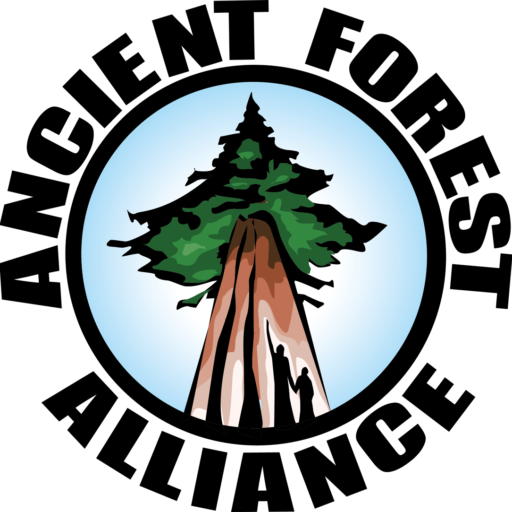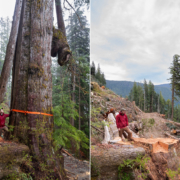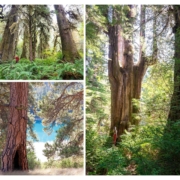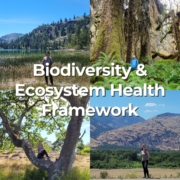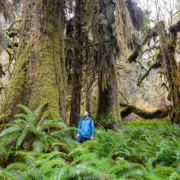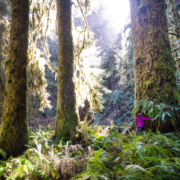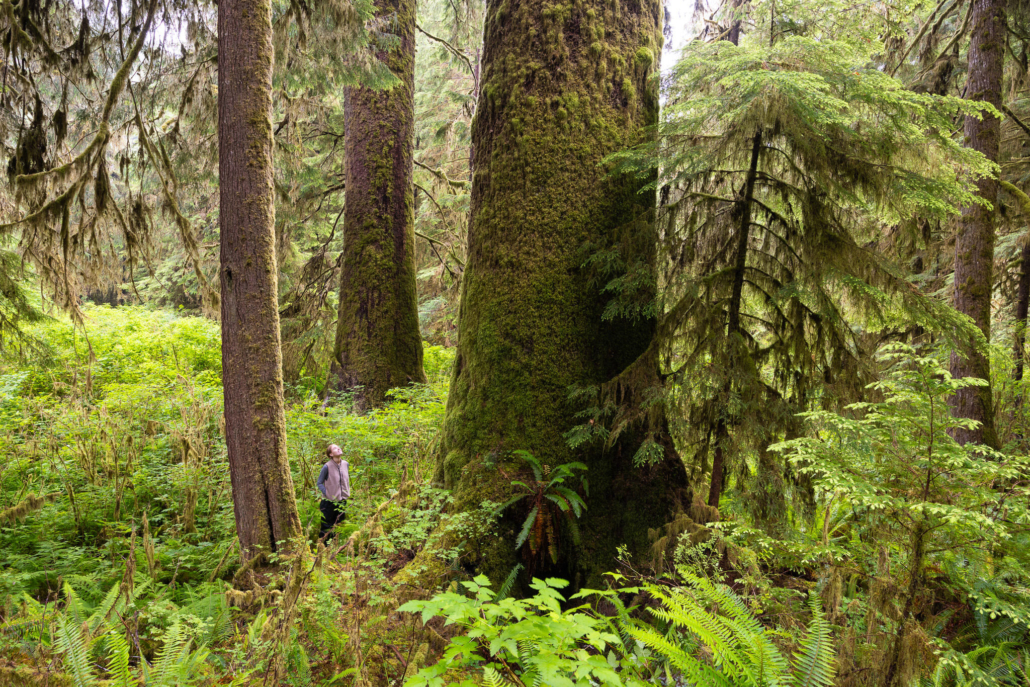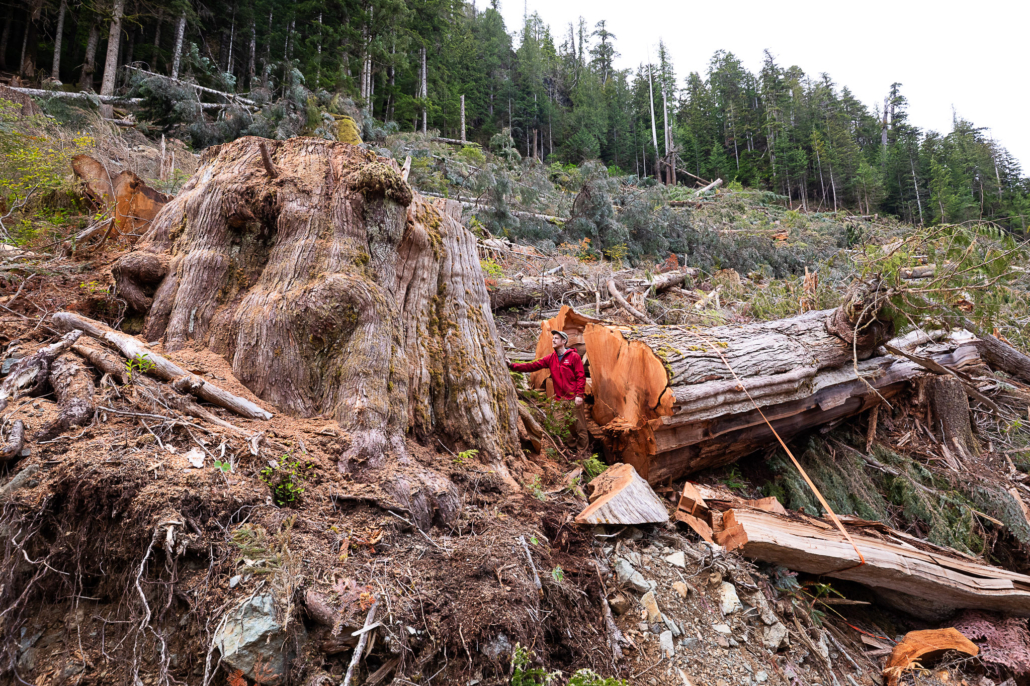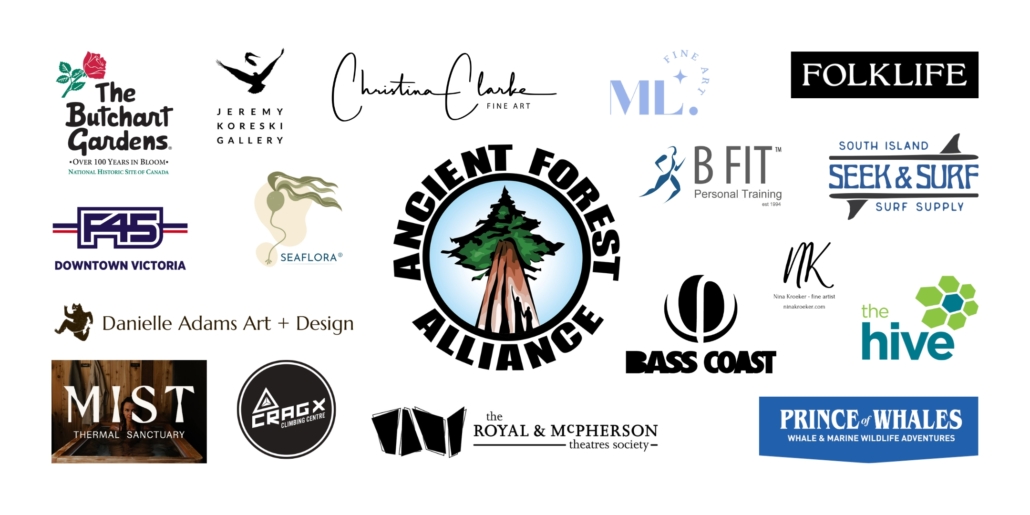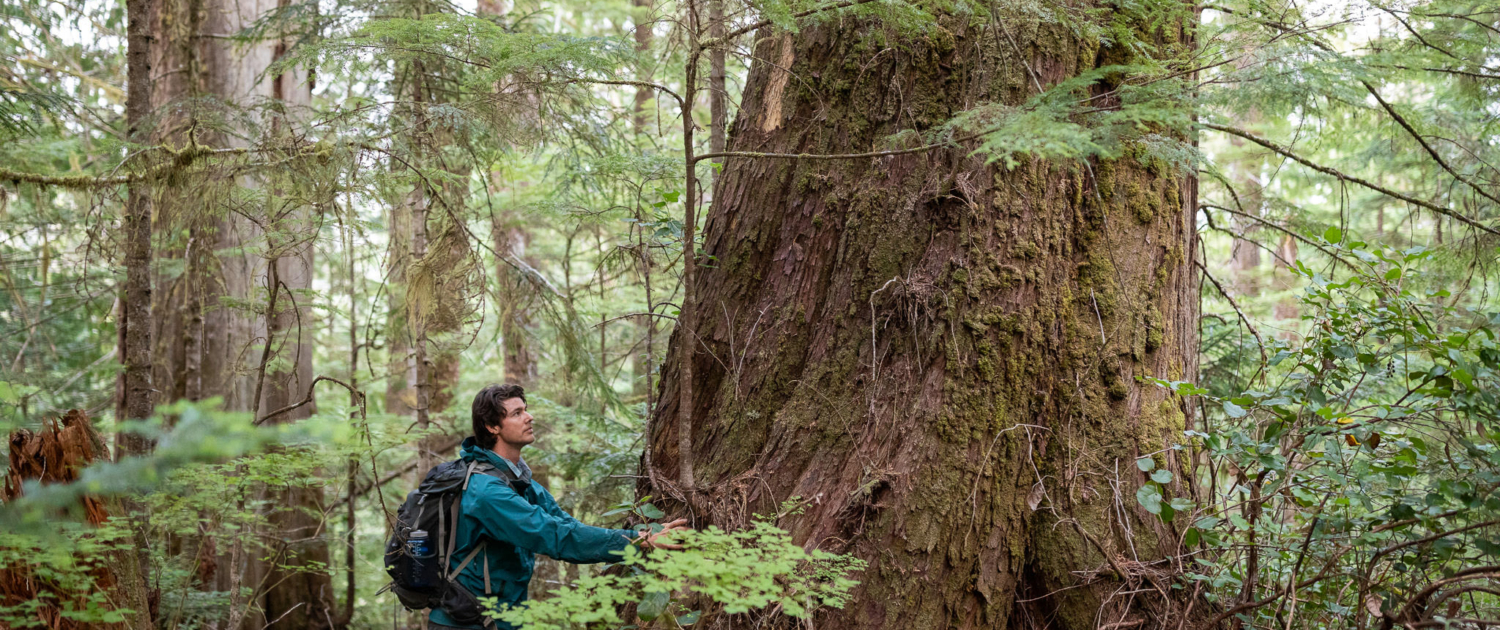 Feb 9 2024
Feb 9 2024AFA’s Recommendations for the BC Government’s Draft Biodiversity and Ecosystem Health Framework
Submitted by Ancient Forest Alliance
January 2024
The Ancient Forest Alliance (AFA) commends the BC government for developing a draft Biodiversity and Ecosystem Health Framework (BEHF) that intends to achieve a major paradigm shift to make ecological health central to decision-making in BC. If done with integrity, the Framework could upend the traditional approach in BC, which has sought to minimize the effect of conservation on the available timber supply for logging, leaving the most biodiverse and productive ecosystems open to industrial extraction.
This transformation cannot come soon enough, as many of our richest and most biodiverse ecosystems are in a state of ecological emergency.
The draft Framework already has several key components that must be retained in the final form, including a commitment to establish an Office of Biodiversity and Ecosystem Health within the BC Public Service to oversee, implement, and enforce the Framework in collaboration with First Nations, the incorporation of updated science for the management of specific ecosystems, the acknowledgment of the need for protection of the most threatened ecosystems, and the acknowledgment of the need to maintain the natural range of variation in native ecosystems. Each of these represents key policy commitments that AFA has advocated for and are critical to ensure a true paradigm shift in the management and protection of ecosystems in BC. However, the language around threatened ecosystems and the need to maintain the natural range of variation is currently vague and needs to be strengthened and explicitly linked to the achievement of BC’s 30% by 2030 protection goals through the enshrining of ecosystem-based protection targets that incorporate distinctions in forest productivity.
As the Framework is developed, it must expand and codify its reference to the need to protect threatened ecosystems and maintain ecosystem function across all native ecosystems by:
- Enshrining Ecosystem-Based Protection Targets (i.e. protected areas targets for all ecosystems) devised by science and Traditional Ecological Knowledge committees. These targets must not only be “aspirational”, but legally binding and overseen by the proposed Office of Biodiversity and Ecosystem Health. These ecosystem-based protection targets must represent the full diversity of ecosystems, capturing critical distinctions in ecological communities and forest productivity. Ensuring forest productivity is incorporated into protection targets is absolutely critical, as productive, large-tree, old-growth forests have been so heavily excluded from protection and are now reduced to far below natural levels. These targets must also ensure long-term ecological health by employing the principles of conservation biology in reserve design.
- Ensuring these Ecosystem-Based Targets guide BC’s expansion of the protected areas system to protect 30% by 2030 (i.e. the targets must inform a much-needed “BC Protected Areas Strategy”), including the allocation of the funding from the BC Nature Agreement and BC’s new conservation financing mechanism.
- Emphasizing rigorous protection standards and the permanency of protected areas using strong, legislated protected-area designations to safeguard ecosystems, rather than relying solely on conservation reserves that are more tenuous and filled with loopholes that continue to allow resource extraction or boundary shifts. The loopholes in these conservation reserves must be closed.
- Establishing clear, legally binding targets, timelines, and milestones to ensure accountability and transparency.
Expanded Recommendations
1. Ecosystem-Based Protection Targets
“Ecosystem-Based Protection Targets” are an essential tool to ensure the full range of BC’s diverse ecosystems and most threatened areas are safeguarded from further degradation.
Historically, environmental protection in BC (and worldwide) has focused on preserving the landscapes and ecosystems least coveted by industry, which tend to be the less productive and biodiverse areas such as mountains, bogs, and the far north. Meanwhile, the richer, valley-bottom and southern ecosystems that are the most biodiverse are left open for industrial extraction. The BEHF must identify this key issue and correct it by making Ecosystem-Based Protection Targets with forest productivity distinctions — a foundation that would truly put ecological health ahead of industrial profit. Otherwise, protection will continue to skew toward ecosystems with mainly rock, ice, and small trees.
This pattern of skewing protection to certain ecosystems is starkly evident with the current distribution of parks in BC. The areas with the highest level of protection include the treeless ecosystems of alpine tundra, the spruce-willow-birch ecosystem of the far north, and mountain hemlock zones in the heights of the snowy Coast Mountains, which are all areas of comparatively lower biodiversity and biological productivity. The Coastal Western Hemlock zone and the Interior Cedar Hemlock zone, which are home to Canada’s largest and oldest trees, have only about 20% and 10% protection, respectively, with much of the protection in the Coastal Western Hemlock zone being in low-productivity forests with smaller trees — hence the need to establish targets for all site series with forest productivity distinctions. Protection rates are even lower for the Interior and Coastal Douglas-fir ecosystems, which both have only 5% under legislated protection. Of course, all native ecosystems are important, but some are currently woefully under-protected and gravely imperilled. This pattern will continue to play out unless the province commits to representing all ecosystems in its 30% by 2030 protection plan.
In addition to broad ecological categories, the province needs to incorporate forest productivity distinctions into its 2030 protection targets. Forest productivity refers to the overall rate of tree growth in a forest. In “high-productivity” forests, trees will grow faster eventually reaching enormous sizes, whereas in “low-productivity” forests, such as in rocky or boggy areas with nutrient-poor soils, growth is stunted and trees may take centuries to get as large as those in high-productivity sites will get in just a few decades, never achieving monumental size. All of the monumental old-growth forests that are so inspiring to people around the world, such as Cathedral Grove, Avatar Grove, Eden Grove, and the Meares Island Big Tree Trail, are examples of high-productivity, old-growth forests. Productivity is connected to seasonal temperatures but also reflects the richness of the soil, drainage, and bedrock.
Frequently, the highest-productivity forests exist as little pockets or ribbons along valley bottoms, surrounded by lower-productivity forests. Traditionally, logging has high-graded out these high-productivity groves (like someone eating all of the chocolate chips from a trail mix), leaving behind only the lower-productivity forests (the raisins). Without targets that account for productivity distinctions, protection will again be skewed toward low-productivity environments with small trees, while the large trees so coveted by industry continue to fall. Less than 10% of the original productive, old-growth forests of Vancouver Island and the south coast of BC are safeguarded under legislated protection, and across the province, less than 5% of the most productive old-growth forests with the largest trees remain.
Independent research has demonstrated that the most productive, big-tree forests have been reduced to a tiny fraction of their original extent across the range of BC’s forested ecosystems. Big-tree forests are also disproportionately important for biodiversity and wildlife habitat. These forests continue to be aggressively targeted for logging and have been historically underrepresented in protected areas.
Therefore, old-growth protection must prioritize protecting the best of what remains: the most productive old-growth forests in BC — starting with deferrals and followed by permanent legislated protection. The heart of BC’s 30×30 protection goals and the BEHF must be the protection of big-tree forests and other at-risk ecosystems.
2. Guiding the Protected Area Plan and the Application of the Conservation Financing Fund
BC has pledged to protect 30% of its total land area by 2030 — an ambitious conservation goal that would double existing protected areas across the province. To support this goal, BC has signed a nearly $1.1 billion nature agreement with the federal government that includes a $300-million conservation financing fund to support Indigenous conservation. But so far, the province has not announced any formal “protected areas strategy”. Instead, the province has signalled that it will take a passive role in distributing funding and support for protected areas as they are brought forward rather than actively identifying gaps in the protected areas system and using conservation financing to enable Indigenous-led protection of the most threatened ecosystems. The BEHF must be the roadmap that guides the province’s 30×30 commitments within the context of a sorely needed BC Protected Areas Strategy, setting the vision that these vast resources can be harnessed to achieve, and providing legal targets to represent all ecosystems in BC’s protected area expansion. Otherwise, the overall target of protecting 30% by 2030 will likely default to protecting vast areas with mainly rock, ice, and small trees, while the most productive and biodiverse ecosystems are again underrepresented.
3. Enshrine Rigorous Protection Standards
The Framework must identify legislated protected areas as foundational to maintaining ecological health. These areas must not have moveable boundaries and must have the standards and permanency to exclude commercial logging, mining, and oil and gas activities. We are concerned that the province is emphasizing weaker conservation reserves, such as Old-Growth Management Areas (OGMAs), where boundaries can be moved under timber industry lobby efforts, and Wildlife Habitat Areas (WHAs), where logging in some areas can occur.
Genuine legislated protection, such as Provincial Conservancies and various Protected Area designations, that exclude commercial logging, mining, and oil and gas development while protecting First Nations subsistence, co-management authority and rights and title, are essential tools for preserving biodiversity and ecosystem health in the larger and central core areas of highest conservation value.
OGMAs and WHAs will remain vital parts of the conservation reserve system to pick up the pieces of remaining old-growth and vital habitat in managed landscapes, but they are no substitute for landscape-level protected areas. Loopholes must be closed so that these conservation reserves actually permanently safeguard the ecosystems they ostensibly protect.
We are also concerned that the province may develop a new legislated protected area designation that will have weak minimum standards that still allow for commercial logging. Any new protected area designations must include minimum standards that forbid commercial logging (as opposed to the cutting of individual trees by First Nations for cultural purposes, such as monumental redcedar used for dugout canoes, longhouses, and totem poles), mining or oil and gas development within them.
4. Ensure Accountability
To ensure ecological health and the representative application of the 2030 protection targets, there must be an implementation committee of independent policy experts tasked with developing the protection plan that incorporates First Nations, stakeholders, NGOs, and public engagement to achieve the provincial targets set by specialized science and Traditional Ecological Knowledge committees. The province must prepare a report setting out the provincial strategy and implementation efforts necessary to achieve the targets and table it in the legislature. This report shall be updated and tabled on an annual basis and reviewable at least every three years. These measures are aimed at ensuring clear accountability and responsibility for reaching ecosystem-based targets, which are critical to the successful protection of biodiversity in BC.
In summary, we are recommending that the province:
- Retain the current goal of establishing an Office of Biodiversity and Ecosystem Health within the BC Public Service to oversee, implement, and enforce the Framework. This office must have the necessary authority and resources to enforce the transition to ecosystem health across all sectors, including developing independent science teams to devise ecosystem-based targets, ensuring that land-use planning and decisions are done in a manner consistent with the goals of the Framework and counterbalance the overwhelmingly industry-centric priorities that have so far guided land management.
- Ensure that the BEHF explicitly guides BC’s commitment to protect 30% of the province by 2030 through ecosystem-based targets that protect all seral stages, productivity classes, and ecosystem types down to the site series level based on their natural range of variation across the province. As the most productive ecosystems in BC have been so extremely depleted, the BEHF must enshrine the protection of the most at-risk and productive old-growth forests and ecosystems where the biggest trees grow and richest biodiversity resides instead of areas of less commercial and ecological value that are currently overrepresented in the protected areas system.
- Guide the application of the newly announced $300-million conservation financing fund and the $1-billion BC Nature Agreement funding to link the support of First Nations’ sustainable economic development to the protection of the most at-risk old-growth forests and ecosystems. It is imperative that conservation financing is directed toward the ecosystems that need it most and not provided on an ad-hoc, first-come-first-served basis.
- Enshrine fully legislated protection with rigorous standards and permanency as foundational to the Framework using models that incorporate Indigenous leadership, co-management and traditional use and still retain the standards and permanency necessary to prevent industrial activity. Provincial Conservancies are a good model for meeting protection goals while respecting First Nations rights and title. The Framework, however, must adhere to the centrality of legislated protected areas as foundational to prioritizing ecosystem-based health. Overemphasis on developing even more stringent methods to practice industrial extraction in threatened ecosystems instead of identifying the areas most in need of full protection will continue to see the erosion of BC’s irreplaceable ecosystems. As this Framework is finalized, we will need to see Ecosystem-Based Protection Targets focused on the most biodiverse and threatened ecosystems such as productive old-growth forests. Without these protection targets to safeguard areas from industrial extraction, we will continue to see these ecosystems further chipped away at and degraded.
- Enforce accountability and transparency through legally binding milestones, objectives, and timelines set out by independent science and Traditional Ecological Knowledge Holder panels, with dedicated regional committees that implement provincial biodiversity directives.
